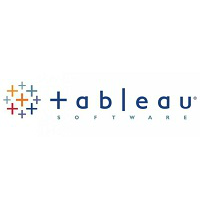Key takeaways
In order to gain a better understanding of embedded analytics, it’s important to acknowledge the role that business intelligence (BI) plays in supporting your company. These two related concepts tend to complement each other well and overlap in the fields of data analysis and reporting.
BI supports decision-making and involves various processes and technologies that gather and transform raw data into meaningful insights. On the other hand, embedded analytics refers to the integration of analytical capabilities within certain business applications or platforms.
When used together, embedded analytics is able to leverage certain BI capabilities. Embedded analytics utilizes the core principles and technologies of BI to deliver on analytical functionality within specific applications, which promotes improved decision-making and more optimized workflow.
Additionally, embedded analytics will often draw upon the data management, analysis, and visualization techniques used in BI to provide real-time insights and reporting features to users.
Embedded analytics explained
Embedded analytics refers to the integration of data analysis and reporting capabilities directly within business applications, platforms, or workflows. It also involves embedding visualizations, interactive dashboards, and analytical tools into existing software interfaces. This will allow users to access and interact with data insights seamlessly within their existing workflow.
With embedded analytics, users can perform data analysis, generate reports, and gain valuable insights without the need to switch to a separate analytics tool or interface. The analytics functionality is tightly integrated into the application your team members are using, which provides them with a seamless user experience.
The ultimate purpose of embedded analytics is to provide users with real-time insights and actionable information within the application they regularly use. It also allows them to leverage data-driven decision-making within their daily workflows.
ALSO READ: What is Collaborative Analytics?
What are the benefits of embedded analytics?
There are a number of benefits your business stands to gain with the adoption of embedded analytics. For example, embedded analytics allows your team to access real-time data insights within the context of their daily operations. In doing so, they can make data-driven decisions immediately without relying on periodic or manual reports.
Additionally, embedded analytics has the potential to improve decision-making across the board by providing relevant data and visualizations within applications. Embedded analytics empowers users to make informed decisions quickly, which allows them to explore pertinent data, uncover patterns, and identify trends without the need for specialized analytics expertise.
Embedding analytics within applications also provides scalability as well as flexibility. As your application evolves and new features are added, analytics capabilities can be seamlessly integrated and expanded to meet your business’s changing needs.
Embedded analytics brings the power of data analysis and insights directly to the eyes and ears of your team and enables them to leverage data-driven decision-making within their daily workflows.
Are there any drawbacks associated with using embedded analytics?
While embedded analytics can offer numerous benefits for your business, there are also a number of potential drawbacks that you should consider before implementing this technology.
Complicated implementation
Integrating embedded analytics into your existing application or platform can sometimes be a complex and time-consuming endeavor. Significant development effort and expertise may be needed to successfully configure and properly customize the analytics solution in order for it to meet your specific business requirements.
Data integration issues
Since embedded analytics rely on accessing and analyzing data from various sources, ensuring data consistency across different systems and databases can come with challenges. Things like data quality issues, data governance and data security concerns may present themselves during the integration process. If any of these issues should occur, additional time and effort to address them will be needed.
Adoption and training
The successful adoption of embedded analytics requires user acceptance and understanding. Members of your team may need specialized training to effectively leverage the analytics capabilities and accurately interpret the insights that are provided. If your team is not properly trained or does not understand the benefits of embedded analytics, they may underutilize the features of this solution, which will then greatly limit its value.
Consider the cost
Implementing and effectively maintaining embedded analytics solutions can come with potential financial risk. Expenses related to licensing the analytics software, data integration, training and ongoing support should all be considered before adopting any analytics software. Your return on investment should be meticulously evaluated to ensure that the benefits of the software justify the costs associated with its implementation and continued use.
Driving Your Business With Embedded Analytics
Embedded analytics can be used to drive your business in various ways, but you must first decide whether you want to buy your embedded analytics solution or build your own. There are arguments for and against each option, so you’ll want to do your research before deciding on one or the other.
Building your own embedded analytics
Unique enterprises that require embedded analytics for a specific use case will likely find more benefit in building or coding their own embedded analytics. This is a great way to ensure analytics are targeting the right datasets, but there are some drawbacks to consider:
- A dedicated team of programmers and developers is required to code and maintain in-house analytics.
- Proprietary analytical solutions often require significant time to develop, resulting in a longer time to market.
- The amount of scalability will be limited to the capabilities of the development team.
- Technical support might not have an immediate solution to unknown bugs and undiscovered issues.
Buying embedded analytics
Many enterprises buy their embedded analytics from a third-party analytics or business intelligence (BI) vendor. Since these are often standardized solutions, they’re user-friendly, accessible, and scalable. However, there are some drawbacks to consider here, too.
- A lack of customization means you might not receive all the features you need.
- Standardized solutions often include features that you don’t need.
- Your third-party vendor could go out of business at any time, leaving you without an embedded analytics solution.
Recommended embedded analytics tools
There are a wide array of embedded analytics tools available in today’s competitive business field. We’ve included three recommendations for powerful analytics software worth considering below.
Microsoft Power BI

Microsoft Power BI is a robust analytics platform that’s very user-friendly and boasts exceptional data visualization capabilities. The software combines power analytics with a user interface that can be easy to grasp and navigate without prior knowledge of how the software operates. Office 365 users should already be familiar with the quality, security and stability that comes with other Microsoft products and Power BI is no exception to that rule.
Tableau

Tableau is a more distinguished platform that has operated in the self-service BI space for quite some time now. As new competitors have continued to trickle into the marketplace, Tableau has consistently made software improvements to give it an edge in the market. This software possesses an enormous collection of data connectors and visualizations, a clean UI and a very impressive processing engine. Tableau offers software support and remains a strong contender in the BI market.
Domo Everywhere

Domo is a cloud-based mobile-forward BI platform that provides companies with a path to draw more value from their data by offering powerful integration and data interpretation to accelerate timely decision-making and actions across your business. Users can build custom apps and automate data pipelines as well, where all activity is made accessible to any user through automated insights.
Is Embedded analytics right for your business?
Determining whether or not embedded analytics is right for your business will depend on a number of factors. Implementing embedded analytics tools may come at a cost if your team is unable to understand how to use the platform properly. If team members do not undergo the specialized training required by certain platforms, a loss of time and resources is an inevitability.
Some analytics software can be a pain to update and customize as well, which means that you’ll have to research the right solution that meets the unique needs of your business as no two solutions are the same. The cost of licensing software and maintaining it can be quite expensive and may come with features that aren’t complimentary to the application your team currently uses.
When used together, embedded analytics and BI can be a powerful combination that enhances customer experience and increases your business’s competitiveness, but It’s up to you to weigh the pros and cons associated with analytics software implementation before pulling the trigger.
FAQs
What is embedded analytics?
Embedded analytics refers to the integration of data analysis and reporting capabilities directly within business applications, platforms, or workflows. With embedded analytics, users can perform data analysis, generate reports, and gain valuable insights without the need to switch to a separate analytics tool or interface.
What to consider before embedding analytics?
When considering embedding analytics, it’s important that you understand that using the analytics software may require your team to undergo specific training in order for the platform to provide value. You should also consider the cost of purchase and whether the platform’s features meet the needs of your business.





